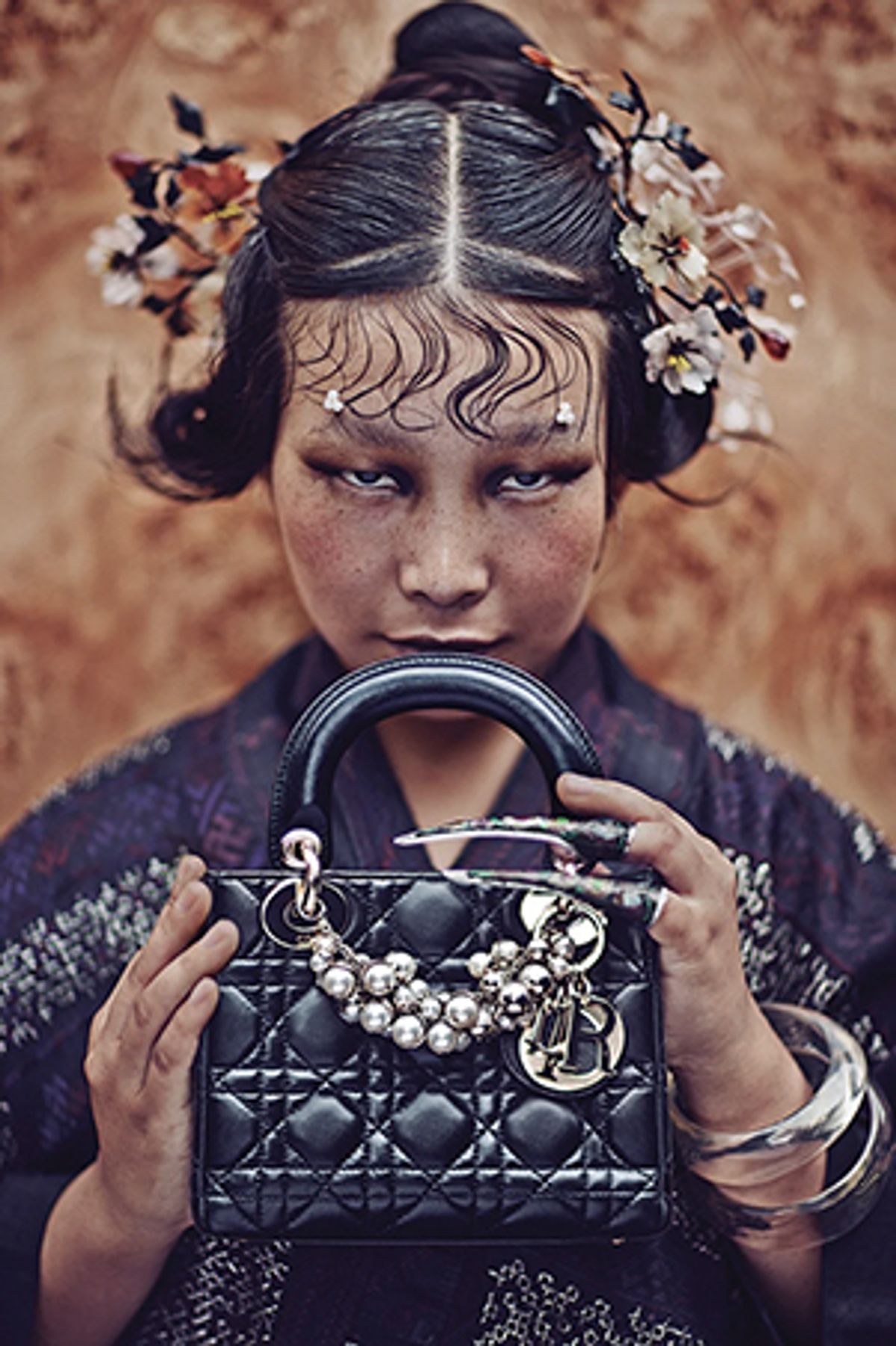An image by the Chinese photographer Chen Man was removed from the Art’N Dior exhibition at Shanghai’s West Bund Art Centre in November after an online campaign denounced it as “ugly” and “creepy”.
Commentators on the Sina Weibo social media platform and echoed in Chinese state media, claimed that the image made Chinese women look unattractive and pandered to Western stereotypes of Asians as small-eyed.
The controversy contrasts with the usual censorship by the Chinese government, which excises works with political or sexual content with quiet efficiency.
Dior quickly issued an apology and removed the work from the exhibition, which ran from 12 to 23 November, and its online platforms. Dior did not respond to queries about whether this was of their own volition or at official request.
Chen, one of China’s most acclaimed fashion photographers, has not commented on the uproar, although amid the furore she apologised on Weibo for an unrelated 2008 photographic series repurposing imagery of the children’s organisation Young Pioneers in a way that could be interpreted as sexualising.
“I am a native Chinese, I deeply love our motherland. I also know that as a literary and art worker I should shoulder the mission of recording and transmitting Chinese culture, showing the beauty of China through my works, which is the goal I have always insisted on striving for,” Chen wrote.
Chen’s ethereal, unsettling image in the Dior show evokes a famous poster of 1920s Chinese movie star Hu Die with the model’s round face, tucked chin angle and retro hairstyle, but adding freckles, heavy eye shadow and the claw-like nail protectors used by China’s 19th-century elites—and a Dior bag.
Critics condemned Chen’s use of a mono-lidded model, and the departure from Chinese beauty norms of large, double-lidded eyes and pale skin. While Chen has photographed China’s most famous faces for scores of fashion magazine covers and advertising campaigns, she has also explored less conventional notions of beauty using stylised angles.
Chen previously shot projects for Dior in 2011 and 2018. “I’m sure it shocked Chen Man, a consummate professional who’s previously been able to sidestep controversy,” says Christopher Phillips, a New York-based photography curator who closely follows the Chinese art scene. “In her fashion work, she’s always known when it’s best to stick with the reigning beauty conventions of the moment, and when it’s time to challenge those conventions.”
The Dior image has been widely compared with Chen’s 2012 series of 12 covers for i-D magazine featuring women from China’s ethnic minorities in dramatic makeup winking at the camera. “Flash forward to 2021, and it seems that the idea of diversity in beauty has become a highly politicised issue in China,” Phillips says. “I was struck that Chen Man’s detractors didn’t just fault her for making an image that was out of step with their own depressingly monolithic beauty standards—she was accused of being unpatriotic. This is a dangerous situation for any visual artist or photographer to be caught in.”
This controversy recalls the uproar in 2018 over a Dolce & Gabbana advertisement using supposedly Chinese-accented English pronunciation and featuring a stereotypically hypersexualised Chinese woman struggling to eat Italian food with chopsticks.


